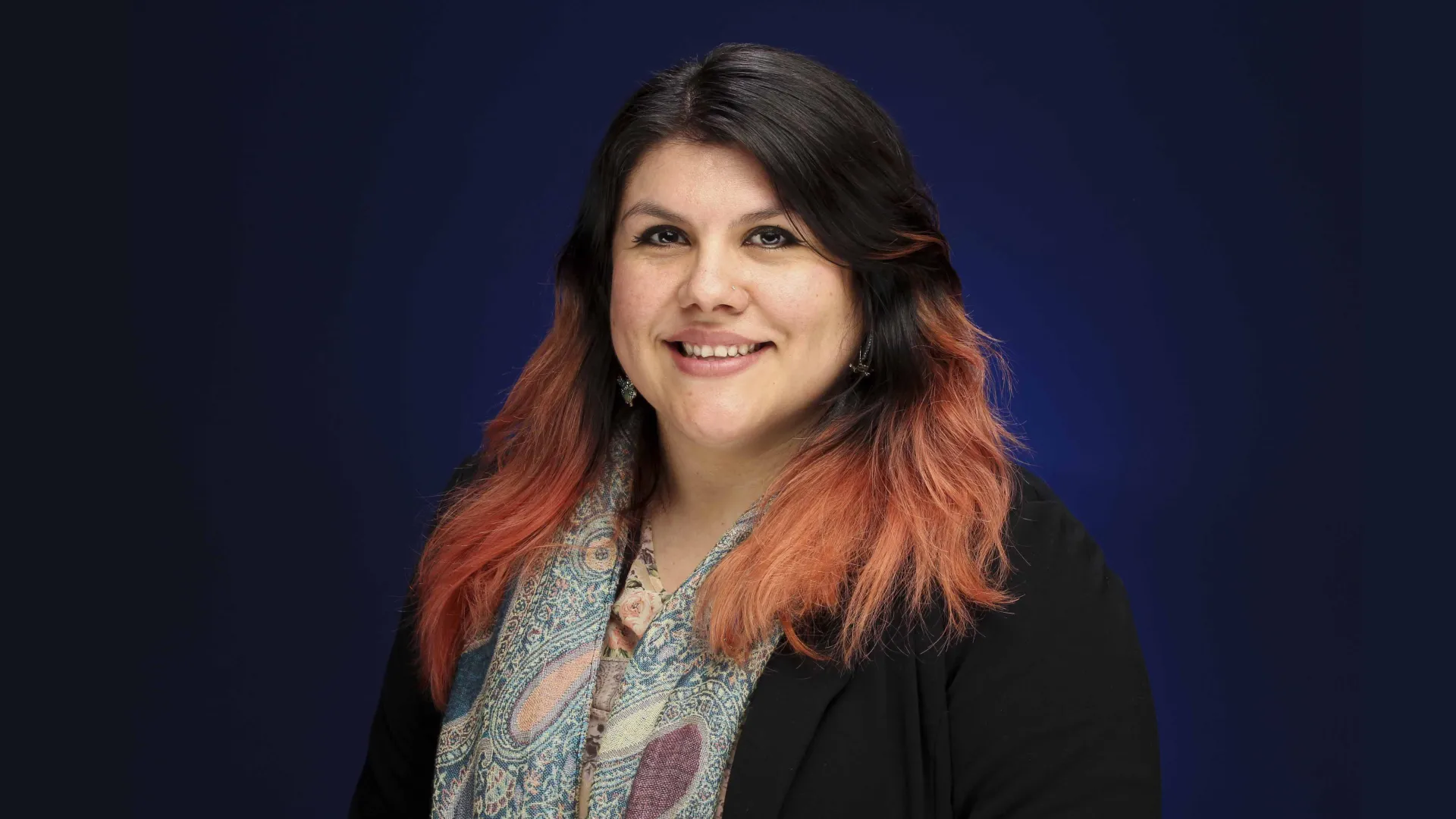Joe Gutierrez | CSUSB Office of Strategic Communication | (951) 236-4522 | joeg@csusb.edu

Liliana Conlisk Gallegos, Cal State San Bernardino associate professor of communication studies, recently had her art piece featured in the Pacific Ancient & Modern Language Association (PAMLA) “Among the Unrest” digital and new media art show.
Due to its impact among the curators, her piece, “Ni una más: para todas todo, nada para nosotras” (Not one more: for all of us everything, nothing for us), was also selected as a “spotlight” during the PAMLA conference in Las Vegas in mid-November. The PAMLA annual conference is dedicated to the advancement and diffusion of knowledge of ancient and modern languages, literatures and cultures.
“It is an honor for me to have been part of the first-ever PAMLA digital and new media art exhibition,” said Conlisk Gallegos. “New and older scholars are working together to bring upon important changes in academic organizations such as PAMLA, formerly the Philological Association of the Pacific Coast, founded in 1899. More doors are opening to innovative and brilliant knowledge production, which was once marginalized and overlooked due to the impositions of coloniality.”
Her multimodal piece is composed of a spoken word video of a single sheet containing a painting in 2D, which critically examines the destructive power of colonial violence and its negative impact on indigenous women and women of color across five centuries.
The video visually guides the viewer from the mouth of a Brown woman shouting out in protest against the deaths of indigenous women due to violence and rape in an agave blood and water bordered path. According to the art piece’s description, the Brown woman represents Tlazolteotl, the anthropomorphic representation of purification, life making, and renewal through the process of eating excrement, or in the case of Brown and Black women, experiencing some of the worst versions of colonial violence.
The path leads into a chalchihuitl stone (precious jade, a metaphor for a newborn baby/child) placed over an ornamental setting usually found in Aztec codices to demarcate representations of precious things. In the precious stone is a QR code that takes the viewer to another piece from the series, a virtual reality spoken word experience titled, “The Coyolxauhqui Imperative 2020.”
“The COVID pandemic brought with it a discourse that has treated the concept of a global pandemic as an oddity, a rupture in the normalcy of an otherwise healthy reality,” Conlisk Gallegos said on the PAMLA page describing her artwork. “To me, and to many other feminists like me who have become conscious of the forces of coloniality, the concept of a global pandemic eating away at human life is not a new thing. This has been clear to me throughout my life many times being forced to ‘eat s#!t’ as a transfronteriza Indigenous mestiza from the Tijuana-San Ysidro border and now as a Woman of Color academic navigating and literally fighting within predominantly white, Eurocentric, and alarmingly violent, hierarchical and binary formats of institutionalized racism and sexism.”
To view “Ni una más: para todas todo, nada para nosotras” and to learn more about Conlisk Gallegos and her work, visit the PAMLA Arts Matter website.